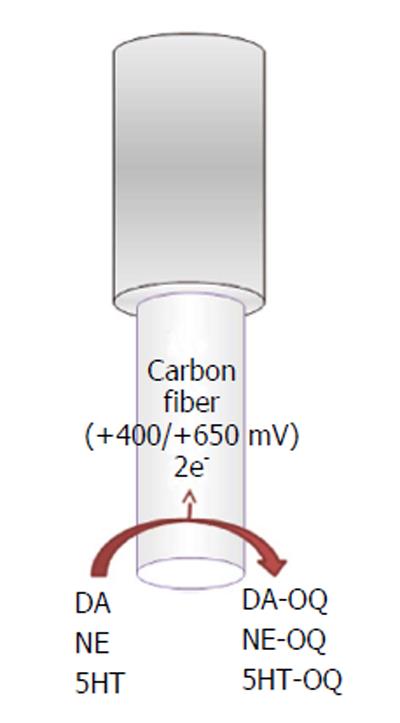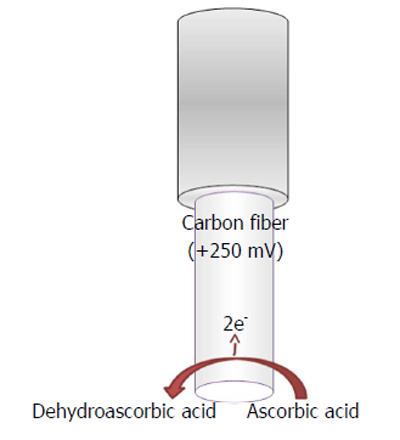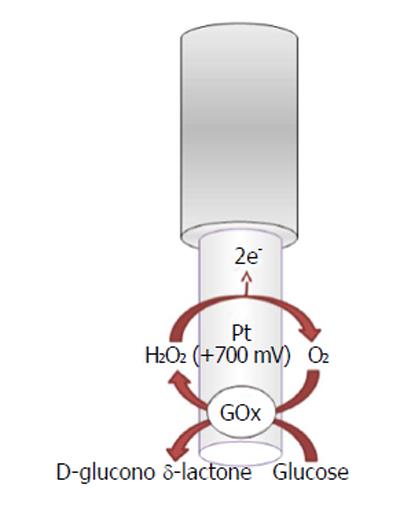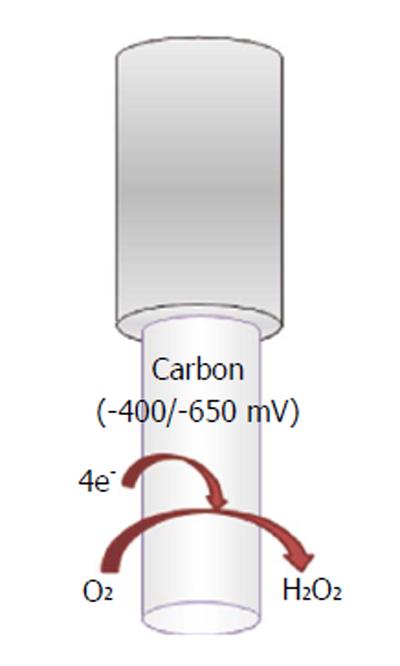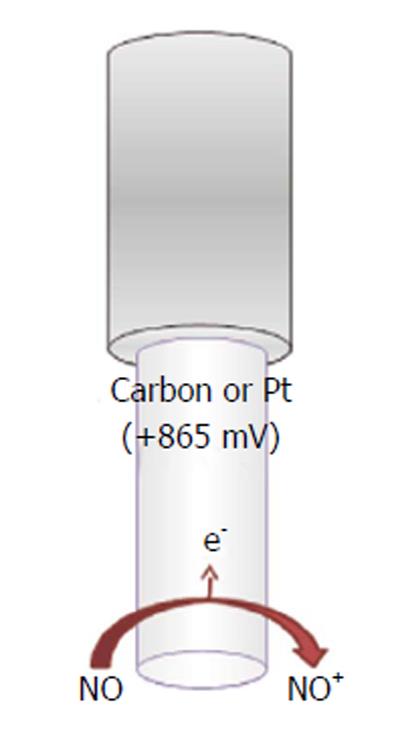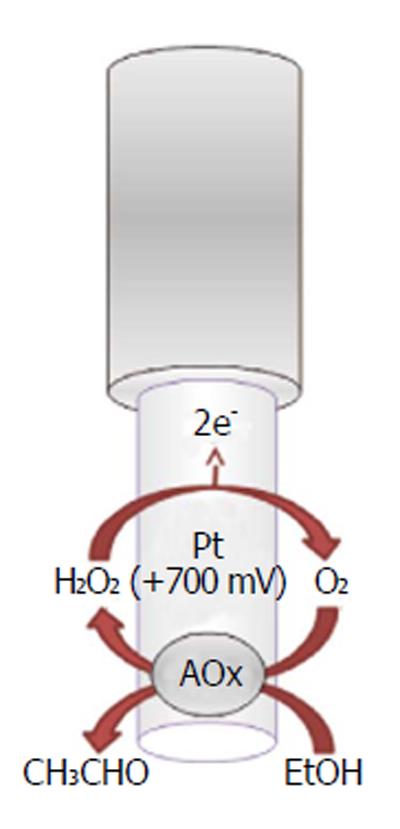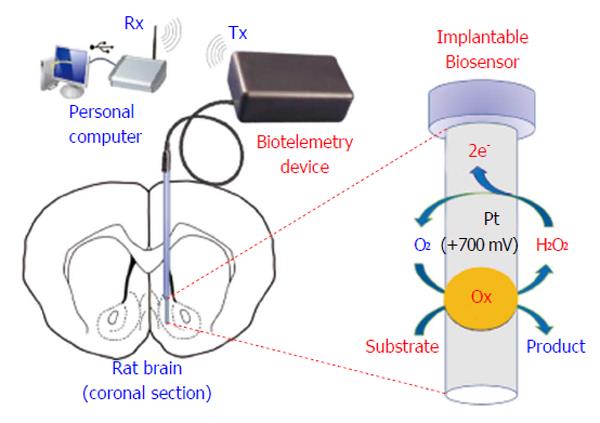Copyright
©2014 Baishideng Publishing Group Inc.
Figure 1 Schematic representation of the carbon-based microsensor used for detecting dopamine, norepinephrine, and 5-hydroxytryptamine in the central nervous system of awake, freely moving animals.
DA: Dopamine; NE: Norepinephrine; 5TH: 5-Hydroxytryptamine, serotonin; DA-OQ: DA-derived orthoquinones; NE-OQ: NE-derived orthoquinones; 5HT-OQ: 5HT-derived orthoquinones.
Figure 2 Schematic representation of the platinum-based biosensor used for detecting acetylcholine in the brain of awake, freely moving animals.
ACh: Acetylcholine; Ch: Choline; ChOx: Choline oxidase; AChE: Acetylcholinesterase.
Figure 3 Scheme of glutamate biosensor.
The transducer is made of a platinum (Pt) wire that immobilizes the glutamate oxidase (GluOx) enzyme that selectively transforms glutamate in alpha-ketoglutarate, producing H2O2 that is then oxidized on the Pt surface.
Figure 4 Scheme of AA sensor used in constant potential amperometry.
In this representation, the transducer is made of a carbon fiber. The AA is oxidized by applying mild potentials (+250 mV or less) needed for oxidizing the AA to dehydroascorbic acid.
Figure 5 Schematic representation of the platinum-based biosensor used for detecting extracellular glucose in the central nervous system of freely moving animals.
The immobilized glucose oxidase (GOx) selectively transforms glucose in D-gloconolactone in the presence of molecular O2 and generates H2O2 that is promptly oxidized on platinum surface.
Figure 6 Schematic representation of the platinum-based biosensors for detecting extracellular lactate in the central nervous system of awake animals.
In the presence of O2, the immobilized enzyme [lactate oxidase (LOx)] selectively converts the substrate (lactate) in the corresponding product (pyruvate) and generates H2O2 that is oxidized on the Pt surface.
Figure 7 Schematic representation of the carbon-based sensor used for detecting the molecular O2 dissolved in the extracellular space of the brain of freely moving animals.
The O2 is reduced on the carbon surface at low potentials and converted to water in a one- or two-step reaction (see text).
Figure 8 Schematic representation of the more widely used sensor for detecting NO in the brain of freely moving animals.
The NO is directly oxidized on a carbon (or platinum) surface to NO+. This sensor is particularly sensitive to electroactive interferences in virtue of the very high oxidation potentials.
Figure 9 Schematic representation of the biosensor for the detection of exogenous ethanol in the brain of freely moving animals.
EtOH: Ethanol; CH3CHO: Acetaldehyde; AOx: Alcohol oxidase.
Figure 10 Schematic representation of the biotelemetry system, connected to a constant potential amperometry-based amperometric biosensor, for the real-time monitoring of brain neurochemistry in freely moving animals.
Ox: Oxidase enzyme.
- Citation: Farina D, Alvau MD, Puggioni G, Calia G, Bazzu G, Migheli R, Sechi O, Rocchitta G, Desole MS, Serra PA. Implantable (Bio)sensors as new tools for wireless monitoring of brain neurochemistry in real time. World J Pharmacol 2014; 3(1): 1-17
- URL: https://www.wjgnet.com/2220-3192/full/v3/i1/1.htm
- DOI: https://dx.doi.org/10.5497/wjp.v3.i1.1









